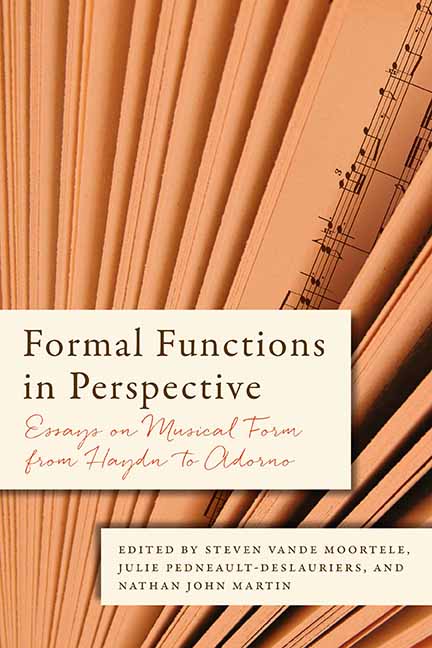Book contents
5 - Schubert’s “Deflected-Cadence” Transitions and the Classical Style
Published online by Cambridge University Press: 26 May 2021
Summary
Schubert has long been famous for the striking character of his modulations. In fact, they are considered a hallmark of his style, particularly in his sonata-form transitions. Here, the precise moment that the subordinate key enters is often highlighted as an extraordinary event, capable of infusing a new and intense atmosphere into the subordinate theme. To achieve this effect, Schubert uses a variety of schemes. One of the most prominent of these consists of a “deflected-cadence” strategy involving two successive cadential progressions. The first, which occurs in the home key, may either achieve closure or be thwarted by an evaded or deceptive cadence. It is followed immediately by the second cadence, which begins the same way, only to be diverted at the last moment into a perfect authentic cadence (PAC) in the subordinate key. The modulation is thus accomplished exclusively by the second cadence, which both ends the transition and ushers in the subordinate-key region.
Schubert's deflected-cadence strategy constitutes a small, yet significant, departure from the classical transition, which usually targets the dominant, rather than the tonic, of the new key. The use of a concluding PAC and the unusual way it is set up create a new effect that distinguishes this type of transition from those of Haydn, Mozart, and Beethoven, as well as many of Schubert's own generation. What is more, the scheme itself has serious ramifications for other sections of the form, especially when elevated to a broader structural level, as shall be seen later in this chapter. Thus in this one detail of Schubert's sonata forms we see a subtle transformation of the classical style indicative of a new approach to sonata form and its aesthetics in the early nineteenth century. This situation emerges more clearly in a further comparison of Schubert's deflected-cadence strategy with conventional classical practice.
The Classical Sonata-Form Transition in the Theory of Formal Functions
We will begin with a discussion of the characteristics of the classical transition as defined by William E. Caplin's theory of formal functions. In Caplin's theory, the transition (what concerns us in this case is the modulating type) destabilizes the home key by a modulation that targets the dominant of the new key, either through a half cadence (HC) or a simple dominant arrival (a noncadential move to the new dominant).
Information
- Type
- Chapter
- Information
- Formal Functions in PerspectiveEssays on Musical Form from Haydn to Adorno, pp. 165 - 197Publisher: Boydell & BrewerPrint publication year: 2015
Accessibility standard: Unknown
Why this information is here
This section outlines the accessibility features of this content - including support for screen readers, full keyboard navigation and high-contrast display options. This may not be relevant for you.Accessibility Information
- 4
- Cited by
